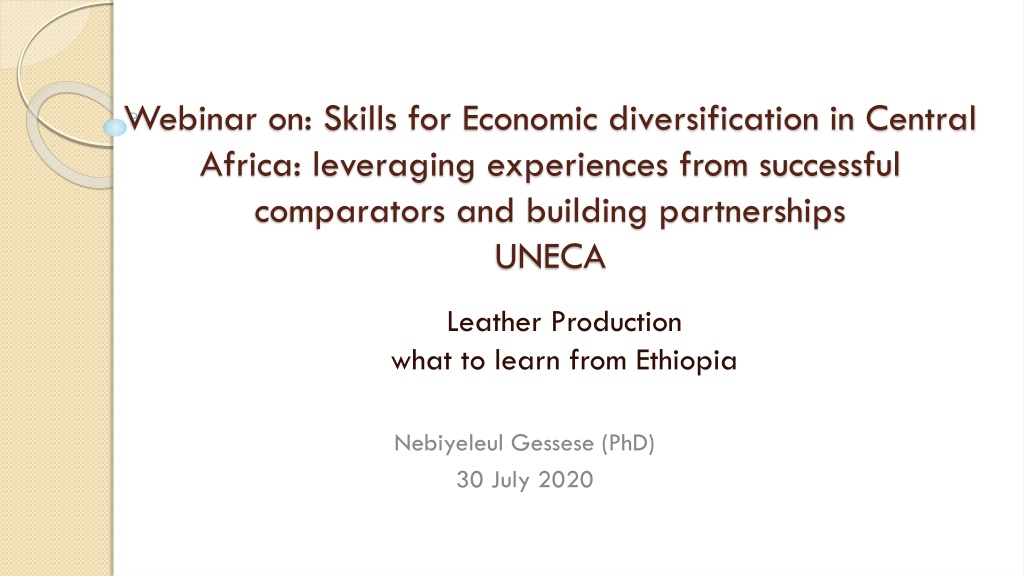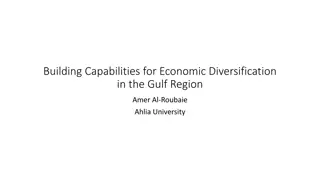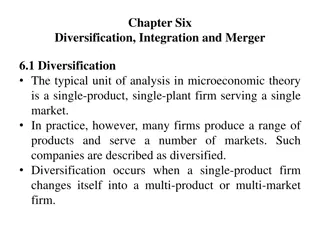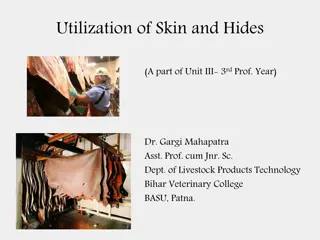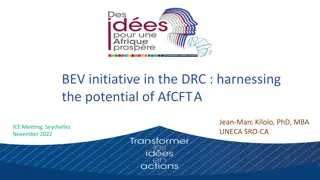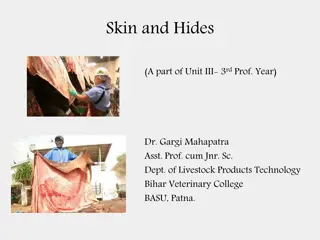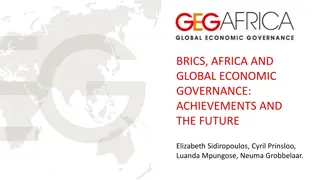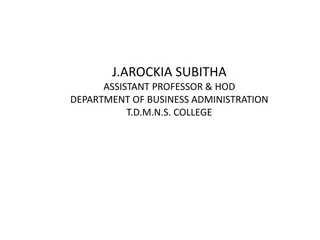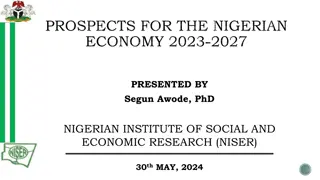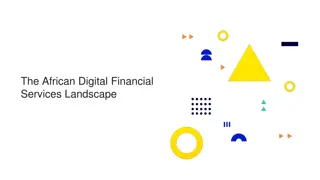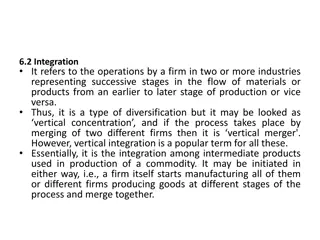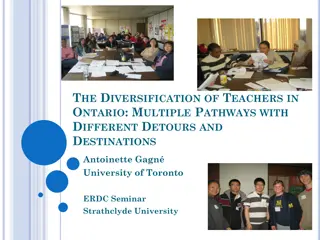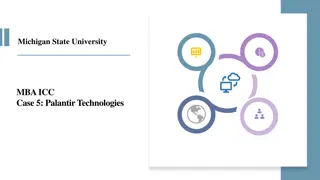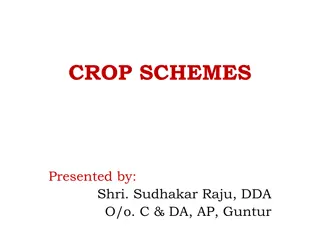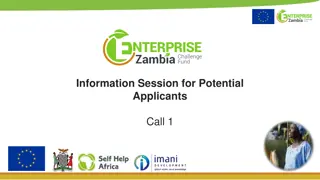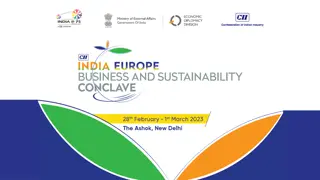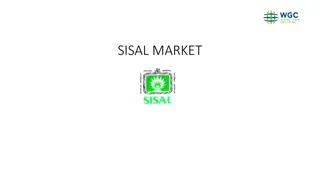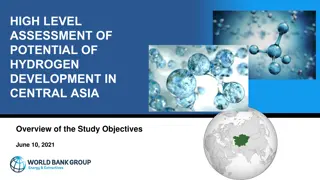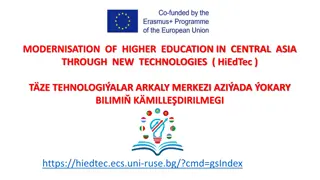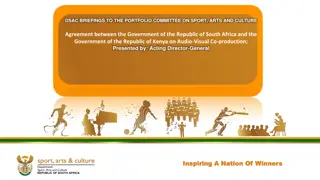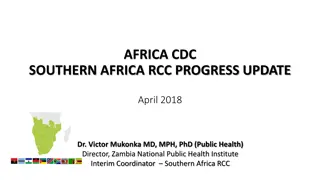Enhancing Economic Diversification in Central Africa through Leather Production
Leveraging experiences from successful comparators, particularly Ethiopia, this webinar explores skills for economic diversification in Central Africa, focusing on the leather industry. It examines livestock populations, raw hide and skin trading, animal husbandry challenges, raw hide and skin production, supply chain to tanneries, and key steps in trading raw hide and skins. Addressing issues like disease prevalence, transportation, and traceability are crucial for optimizing leather production and competitiveness in the global market.
Download Presentation

Please find below an Image/Link to download the presentation.
The content on the website is provided AS IS for your information and personal use only. It may not be sold, licensed, or shared on other websites without obtaining consent from the author. Download presentation by click this link. If you encounter any issues during the download, it is possible that the publisher has removed the file from their server.
E N D
Presentation Transcript
Webinar on: Skills for Economic diversification in Central Africa: leveraging experiences from successful comparators and building partnerships UNECA Leather Production what to learn from Ethiopia Nebiyeleul Gessese (PhD) 30 July 2020
Comparison of Livestock Population and RHS Productivity Bovine Hides Location No of cattle (mln head) 1659.6 291.7 54.6 Share of global herd (%) 100 17.6 3.3 Output of hides (mln pc) 364.3 40.9 3.3 Ratio of hide output to cattle head (%) 22.0 14.0 6.0 World Africa Ethiopia Sheep Skins Location No of sheep (mln head) 1163.7 301.8 Share of global herd (%) 100 25.9 Output of skins (mln pcs) 550.0 110.8 Ratio of output to sheep head (%) 47.3 36.7 World Africa Ethiopia 26.2 2.3 8.7 33.2 Goat Skins Location No of goats (mln head) 992.9 345.1 24.7 Share of global herd (%) 100 34.8 2.5 Output of skins (mln pcs) 486.3 114.2 8.1 Ratio of output to goat head (%) 49.0 33.1 32.8 World Africa Ethiopia
Informal live animal trading Raw Hide and Skin (RHS) Trading Overview Animal Husbandry Production Trading Slaughter practices (export or domestic) Collection and delivery of RHS Animal holding practices and distribution around the Country Small holder farmers (99.3%) Commercial farmers (0.7%) Trade, sales, direct procurement from production sources to tanneries Export abattoirs (14) Domestic abattoirs (250) Backyard slaughter Formal live animal trade Small scale collectors Medium/large collectors Traditional tanneries The proportion of livestock under commercial ownership/ranching model is estimated to be less than 1% Traceability and animal welfare issues are huge obstacles which need to be addressed through close knit collaboration between the Ministry of Agriculture and other relevant stakeholders Trading of live animals in key areas is driven by the demand of the export abattoirs who have in turn driven down the slaughter age as a result of consumer demand pressures Younger animals being traded means limited usability of the skin and ultimately low product diversity and portfolio-this creates a limit on a firm s ability to compete
Animal Husbandry There are 4 major animal husbandry challenges which have a direct impact on RHS as an input for the leather industry 1. Systems of raising livestock 2. Disease Prevalence and Management 3. Transportation and handling 4. Traceability
Raw Hide and Skin Production and Supply 4 - Common slaughter methods 1. Backyard slaughter 2. Rural Slaughter Slab Operation 3. Domestic Abattoir 4. Export Abattoir
Key Steps Involved in Trading RHS Semi- processing (wholesale) Storing & Preservation Production Collection Collection Tannery
Landscape Tanneris Current Breakdown of Investment Joint Venture (JV) 3% Foreign Direct Investment (FDI) 45% Domestic Investment (DI) 52% Total of 33 registered tanneries, of which 24 are currently operational 14 are FDI and 19 are DI Of the total daily capacity of 1 million sq. ft. of fished leather about 60% comes from FDIs FDIs focus more on skin than hides
Estimated/Potential RHS Production and Tanneries Capacity Annual estimated Raw Hide mln pcs Annual estimated Raw Skin mln pcs Estimated production with minimum kill rate Realized Recovery (2016/17) Tanneries installed soaking capacity 4 21 2 19 4 46
Constraints in the Ethiopian - Leather Sector Environment and Sustainability Compliance to International Standards Export and Investments Finance and Incentives Institutional Coordination Customs and Logistics Workforce Development and Sustainability
Policy and/or Technical Interventions undertaken and envisaged Leather Sector Inputs supply (RHS, Chemical, Accessories etc.) Policy Technical Introduce floor price mechanism for RHS at production and collection level to incentivize better collection rate Improve RHS management and inspection system Introduce Restricted Substance Lists (RSL) for leather manufacturers Enable existing FDI footwear factories to supply the domestic market with accessories and components and provide product development services. Optimize utilization of existing abattoirs and encouraging modern/commercialized farms and abattoirs via new investment following the directive already approved by the Ethiopian investment board Develop pre-tanning process or pickling plant by abattoirs, traders or tanners Focusing on animal health and handling
Policy and/or Technical Interventions undertaken and envisaged Leather Sector Cont Production Process Policy Technical LIDI driving research and product development with incentive mechanism established within LIDI to encourage proactive support Incentivize R&D and technical laboratory set-up at the tannery and leather product factory premises Ensure the enforcement of standards such as Leather Working Group (LWG) Environmental Audit Protocol, Zero Discharge of Hazardous Chemical (ZDHC) Certification, and Restricted Subsistence List (RSL) certification which are key compliance requirements globally Put in place a process control guideline/training system based on LWG standards so that tanners conform to specifications Encourage the principle of PPM (Planned Preventative Maintenance) through private service providers and consultants International expert support to ensure that the tanneries and factories are run as per international business standards
Policy and/or Technical Interventions undertaken and envisaged Leather Sector Cont Marketing Policy Technical Build business network through experienced marketers and create a digital presence for easy access Export and Investment Policy Technical Enable domestic tanneries with indirect exports to access USD Targeting international brands and manufacturers for increased export and induce new investment in Ethiopia Investment promotion via Industrial Parks
Policy and/or Technical Interventions - Leather Sector Cont Environment Policy Technical Increased and systematic checks of tanneries for installing primary and secondary treatment plant. Put in place a standard guide for responsible water usage Incentives, Coordination, Logistics, and Customs Finalize the Modjo Common Effluent Treatment Plan (CETP) plant construction Policy Technical Introduce performance based new incentives for value addition and improve management of existing incentive mechanisms Create a joint taskforce between key supporting institutions to serve as a central coordinating body to drive necessary change Set logistic competitiveness target
Policy and/or Technical Interventions - Leather Sector Cont workforce development Policy Technical Establish a human resource development fund to support with worker training in both soft and hard skills Set-up worker service support centers to improve retention and address worker unrest related issues Workers health and safety procedures and guidelines development and enforcement
